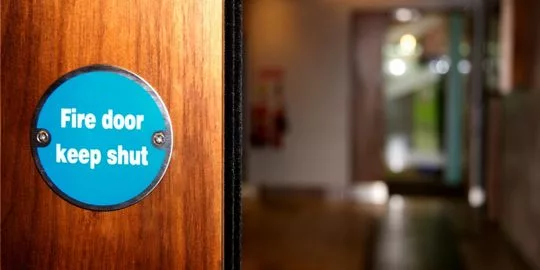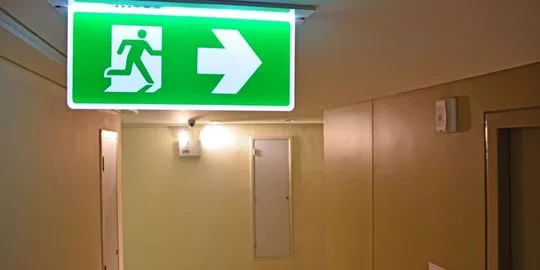In January 2023, new fire safety regulations were introduced in England, along with updates to fire door guidance. The legislation changes require residential buildings to update their fire door products with a focus on regular fire door maintenance and procedures.
One of the most significant changes in the revised fire regulations is what to do when checking fire doors. This includes how frequently they should be inspected. In addition, the 2023 fire door guidance outlines the responsibilities of landlords when owning a residential premise. There are key differences between a purpose-built block of flats and an individual home.

What Happens Now?
The Fire Safety (England) Regulations 2022 came into force on 23 January 2023.
This legislation applies to any and all premises that house workplaces in them. In addition, all the common parts of all multi-occupancy residential buildings over 11m in height are affected too.
Firstly, the inquiry’s report recommended:
- You should read through all fire door guidance: The owner and manager of every residential building containing separate dwellings should read through all fire door guidance.
- Fire doors must be inspected now: The responsible person should undertake an immediate inspection of all fire doors.
- Responsible persons should cover a range of health and safety legislation, including educating occupants on fire safety.
Owners of buildings that are more than 11 metres tall will now be responsible for looking after their multi-occupied residential properties and regularly inspecting their fire doors. In detail, this new law has made it a legal requirement for all multi-occupied residential buildings in England with storeys over 11 metres high to:
- Check all fire doors (including those with self-closing devices) on a quarterly basis in the common parts.
- To undertake, on a best-effort basis, annual checks of all flat entrance doors (including self-closing devices) that lead onto the building’s common parts.
Lastly, we will ensure compliance with current legislative standards by carrying out regular checks, at least four times a year, to make sure that all fire doors have working self-closing devices.

Minimum Requirements For Checking Your Fire Doors
A responsible person should consider:
- Any alterations or damage to the fire door.
- Any gaps around the door frame, seals, and hinges.
- You must check they are all fitted correctly.
- That the door closer shuts the door
- That the door closes correctly around the whole frame
- That there is no visible damage, either deliberate or from wear and tear to the door or door closer
Need To Prevent Fire Doors Slamming?
Requesting Access
It is recommended that residents be encouraged to allow responsible persons access to check their flat entrance doors. If the responsible person is unable to access a property then he or she should gather evidence of what steps they’ve taken to attempt access.
The responsible person can include correspondence with the residents seeking permission to gain access.
What Has Caused This Legislation Change?
The Grenfell Tower Inquiry noted, in its Phase 1 report, that “fire doors play an essential role. They prevent or inhibit the spread of smoke and toxic gases. Additionally, they preserve the effective compartmentation of buildings.”
The Inquiry noted that the fire doors in Grenfell Tower did not, through damage and/or disrepair, perform their intended function of preventing smoke and gases from spreading.

Conclusion
The new legislation is designed to protect the lives of building occupants. It is vital that any responsible person for a building understands their responsibilities, and takes action to ensure compliance with the law.
The Grenfell Tower disaster has highlighted the need for proper fire safety in buildings. This includes ensuring that all occupants of a building are made aware of their responsibilities, and that fire risk assessments are carried out as necessary to ensure compliance with legislation.